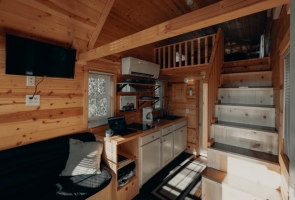I think it goes without saying that things have changed quite a bit just in the last few years when it comes to selling a home. Today’s buyers approach the transaction the same way they approach buying anything. They feel the need to interact and engage, long before they even meet their Realtor.
No matter how good a headshot you put on your signage, no matter how big you smile, no matter how firm your handshake, you won’t get far with most buyers – particularly millennials – with 20th century salesmanship alone. How you present your agency (or yourself as an independent agent) through your website and social media will determine if you ever even get that far.
Being diligent about content creation and promoting that content on major MLS sites and social media is vital to the health of your business. This is especially true if you are a buyer’s agent, but the seller’s agents out there should pay attention, too. After all, you really do need each other.
A great real estate content development strategy considers several key factors. With that in mind, I want to share with you five things you can start doing right now to get your properties in front of the right people, and it starts long before a specific property hits the market.
#1 – Start by Optimizing Your Listings
I’ve done an entire post on this one, so I’ll just direct you here, for starters. If you haven’t yet read that post, go ahead and click the link now. I’ll wait. It is important to understand the importance of a listing that is optimized for its intended buyers.
#2 – Develop a Buyer Persona First
You cannot deliver optimized content without knowing, specifically, who your ideal buyer is. If your agency or realty company seems to only have a vague impression of who that is, it can be very hit finding a good match for the property.
Developing a buyer persona or ideal avatar for each type of property with which you deal is a great first step, and there are loads of resources that can help you with that. Note, please, that I said each type of property – residential, commercial, luxury, economy, etc. It will likely be necessary to clearly define a number of ideal buyers and develop content around them.
As a first course of action, though, I would recommend trying this with the type of property in which you deal most frequently. If that happens to be suburban homes in the $200,000–400,000 price range, start there and build out. I’ve also done blogs you can search on how to develop your own buyer persona, so I’ll reserve further comment on that here, too.
After you know everything there is to know about your ideal buyer, test out a content marketing strategy that is designed to attract your specific avatar. Develop blog content, listings, and social media content that caters to that specific individual and see who responds. You can always adjust the way you deliver content to discover what works best. In fact, you’re likely to find it necessary, so be prepared to do a little work on this one.
#3 – Develop Your Content Strategy
I mentioned three distinct areas of content development to which you should be paying the closest attention, so let me make a few brief recommendations about each.
Blog Content – General real estate topics work well, but your own observations about the buying process, the markets in which you operate, and interesting details about the cities and towns where you do business are even better. If you have a property with an interesting history, don’t be afraid to tell its story in blog form and link to your listing.
Property Listings – Again, I’ll refer to my earlier post about this one, but will add just a couple details here. Do your homework before you develop your listings. See what kinds of details your competitors highlight in theirs. You can learn as much about what not to put in your listings as you can about what works simply by observing how the other guy does things.
Social Media Content – Facebook and Twitter are great resources for promoting things like blog posts, but for more visual-based content, you might want to look to platforms like Instagram and Pinterest to attract better (and younger) buyers.
Be a presence on your social channels. Automate some (or even the majority) of your posts, but don’t forget to check for messages, scan comments, and respond personally when you can. The most successful social campaigns are those where the human beings behind them regularly show their face and demonstrate their knowledge, likability, and attention to the needs and wants of their customers. This is true for any business, and real estate is no exception.
#4 – Track Your Progress
Be observant of what works and what doesn’t. If no one seems to want to read your blogs or share your social posts, there’s always a reason why. The variables are too broad for me to start outlining reasons, but you will know where your efforts are being wasted and where they are working in your favor. When you identify the problem areas, you need to take action to fix them.
#5 – Call in the Professionals When Necessary
As a final thought, if you are struggling to get the results you want from your content strategy, I strongly recommend enlisting the help of one or more professional agencies or freelancers who can assist in areas like real estate copywriting, listing development, and social media management.
There is more to all these areas of content creation and management than I have time to get into in one article, but smart marketers and business professionals understand the value of partnering with companies and individuals who can help move their businesses in a positive direction. If you need help, seek it out. Your buyers, your sellers, and your sales statistics will thank you.




